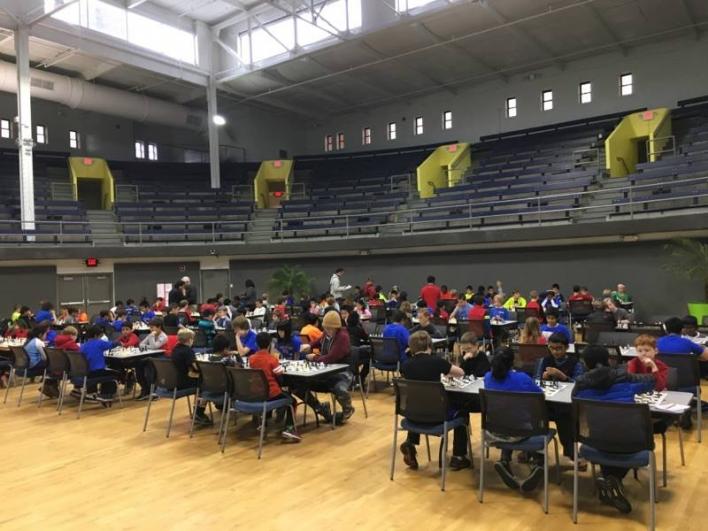
by Emily Sholtis & Matthew Pepper, Basis Policy Research
Happy New Year, chess fans! Welcome back from the holiday break. This first research blog in 2017 discusses the K-12 reform movement known as “standards-based education” and how it is being adopted within the chess-in-schools movement. Standards-based education (SBE) has been one of the largest educational reforms of the past few decades. SBE is aligned to reforms that shift the educational paradigm to more of an outcomes-focused model. Standards-based education is based on three core, aligned components:
Standards
Standards are descriptions of skills, abilities, and knowledge students are expected to attain at specific stages of their education. An example standard from 3rd grade math is Recognize area as an attribute of plane figures and understand concepts of area measurement. Standards can have sub-standards beneath them that further break down each standard into smaller building blocks. Standards ensures that students experience consistency and continuity. Regardless of social class, neighborhood, gender, income, or race students are held to the same standards. Similarly, SBE promotes continuity so that the material those 6th graders masters this year will align and feed into what they are expected to know and learn in 7th grade. Teachers also theoretically benefit because their instructional goals are clearly stated, and there is transparency around how students’ learning will be judged.
Curriculum
If standards are the “What” of SBE then the curriculum component is the “How”. A curriculum is the body of instructional resources that are used throughout the course, including textbooks, lessons, pacing, sequence, and supplementary materials. A curriculum should align to the instructional standards; stated differently, it should organize and teach material that will result in students learning the standards.
Assessments
The third and final component of SBE are assessments, which measure the extent that students have mastered the material. Ideally there is an assessment program that provides both formative and summative results. Formative results are typically received quickly by teachers and during the school year. They are used to adjust instruction, repeat material not fully mastered, and target resources to struggling students. Summative assessments are usually held at the end of the year and are used to understand the performance of teachers and schools. Like curriculum, assessments should be aligned to standards so that they measure the extent students mastered each one.
We are not aware of existing chess standards currently in use within school, but several in-school chess programs do use assessments to measure the extent of student learning. Chess standards and assessments will surely continue to develop as in-school chess becomes more popular throughout the world. The most developed of the three SBE components in chess instruction is curriculum. While less formalized than most state-level SBE curriculums, there are several existing chess curricula that could be adopted and/or adapted for a SBE chess program. We end this blog entry with a brief summary of four such programs. Stay warm!
Ashley Parr LLC
While well known for his success in the game and status as a grandmaster, the CCSCSL’s own Maurice Ashley has also been active in developing tools and resources for teaching chess in schools. In his 2005 book “Chess for Success” Ashley offers insight into how chess can benefit students and be used as an educational tool. More recently, Ashley has teamed up with fellow friend of the CCSCSL, Dr. Teresa Parr to produce their own chess curriculum leveraging Ashley’s extensive experience in the field and Dr. Parr’s background in psychology and education. Their curriculum covers a range of chess outlets from academic programs to chess camps. For more on their resource visit their website here.
Children and Chess: Guide for Educators – Alexey W. Root
Alexey Root, who gained the title of Woman International Master in 1989, has developed similar resources over her career as an educator in an effort to promote chess as an educational tool. To date, she has released seven chess instruction titles focusing on such topics enriching literacy, cultivating problem-solving and inquiry skills, and integrating chess into the fine arts. Of particular interest is her book “Children and Chess: A Guide for Educators” which focuses on giving teachers the tools they need to provide meaningful chess instruction. As with Maurice Ashley’s publications, these works could be utilized as a core tool with a SBE chess curriculum.
Chess in Schools and Communities
Several months ago, we discussed an exciting new article by Jerrim et al discussing the impacts of the English non-profit Chess in Schools and Communities’ (CSC) chess curriculum. Since the publication of the study, CSC has released their 30-lesson curriculum on their website. Their program boasts cross-curricular links and is accompanied by a full battery of handouts, lesson plans, and worksheets for use in the classroom. Examples of their resources for their first lesson can be found here. The CSC program has already been implemented in numerous English schools and is targeted towards in-school chess programs.
Chess.com and ChessKid.com
In August of 2015, ChessKid.com, a subsidiary of Chess.com, launched its new chess curriculum. This tool was developed through a partnership between the ChessKid team and international master Daniel Rensch. Notably, this curriculum was deliberately aligned to overlap with the Common Core, the most commonly used K-12 math and English/language arts standards in the United States. Furthermore, their curriculum is free for all programs and schools to use. Much like the CSC program, the ChessKid Curriculum has guiding questions, activities, worksheets, and timeline for use in after and in school chess programs.


